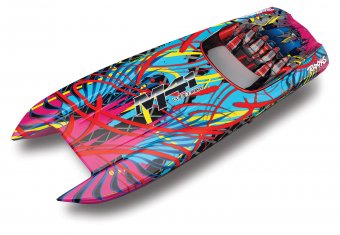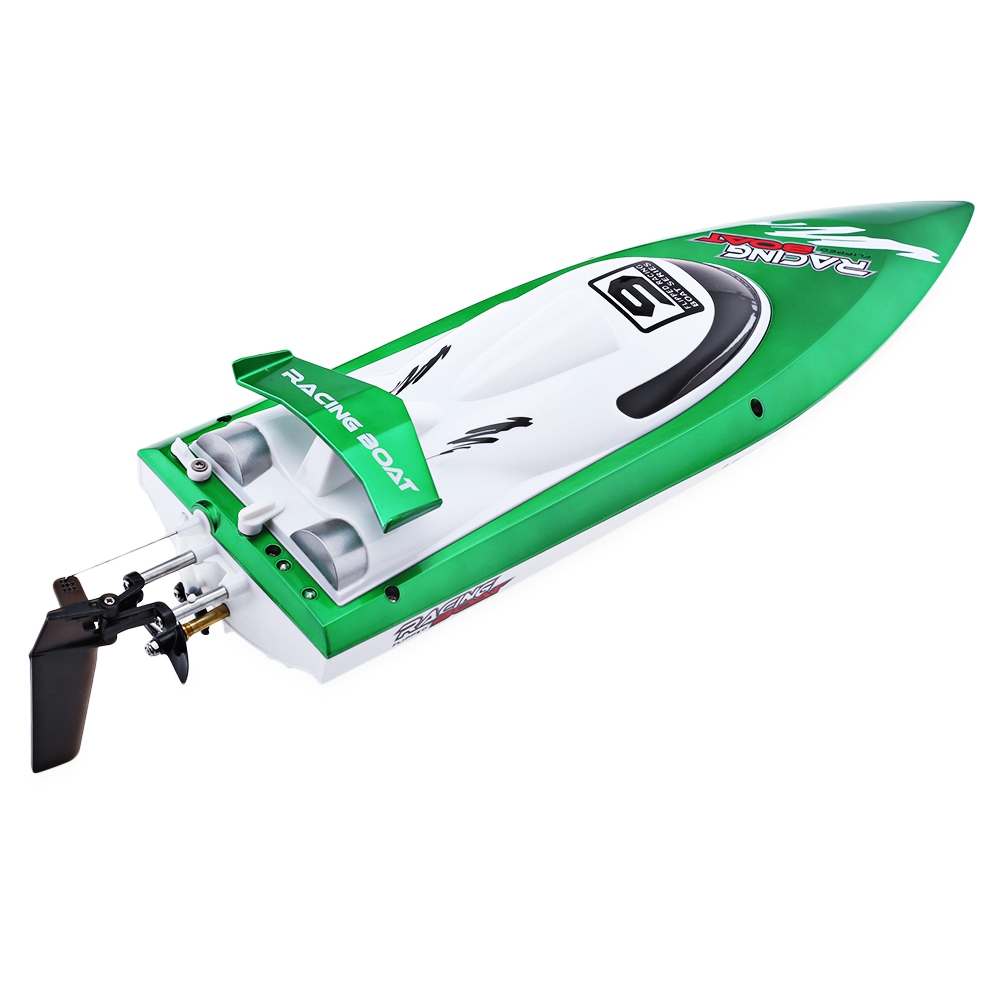
Radio-controlled boats are model boats that are operated remotely using a radio control system. They come in a variety of sizes and types, ranging from small toy boats to large scale models that can be several feet in length. Here is an overview of radio-controlled boats:
- Types of Radio-Controlled Boats: There are several types of radio-controlled boats available, including sailboats, speedboats, hovercraft, submarines, and tugboats. Each type has its own unique features and characteristics, and can be operated in different types of water environments.
- Power Sources: Radio-controlled boats can be powered by different sources, including electric motors, gasoline engines, or steam engines. Electric motors are the most common power source due to their ease of use, affordability, and environmental friendliness.
- Radio Control Systems: Radio-controlled boats are operated using a radio control system, which consists of a transmitter and a receiver. The transmitter is used to send signals to the receiver, which controls the boat’s movement and operation.
- Hobby and Recreation: Radio-controlled boats are popular as a hobby and recreational activity. Many enthusiasts enjoy building and customizing their boats, and participating in races and events.
- Education and Research: Radio-controlled boats are also used for educational and research purposes, such as studying hydrodynamics and fluid mechanics, or teaching students about marine engineering.
- Safety Considerations: It’s important to operate radio-controlled boats in a safe and responsible manner, and to follow all safety guidelines and regulations. This includes avoiding crowded or restricted waterways, using appropriate safety gear, and ensuring that the boat is properly maintained and operated.
Overall, radio-controlled boats are a fun and exciting way to explore the world of boating, and can provide opportunities for learning and discovery. Whether you are a hobbyist or a researcher, there are many different types of radio-controlled boats available to suit your interests and needs.
Contents
Types of Radio-Controlled Boats:
There are several types of radio-controlled boats available, each with its own unique features and characteristics. Here are some of the most common types of radio-controlled boats:
- Sailboats: Radio-controlled sailboats are powered by the wind and controlled by the rudder and sail. They come in a variety of sizes and types, including monohull, catamaran, and trimaran designs.
- Speedboats: Radio-controlled speedboats are designed for speed and agility. They are usually powered by electric motors or gasoline engines, and can reach high speeds on the water.
- Scale Models: Radio-controlled scale models are replicas of real boats, such as warships, yachts, and tugboats. They are often detailed and accurate, and can be used for display or as working models.
- Hovercraft: Radio-controlled hovercraft are unique in that they can operate on both land and water. They use air cushion technology to glide over the surface of the water or ground.
- Submarines: Radio-controlled submarines are designed to operate underwater, and can be used for exploring or racing. They are usually powered by electric motors and use ballast tanks to control their depth.
- Fishing Boats: Radio-controlled fishing boats are designed to simulate real fishing boats, and can be used for fishing or as working models. They often come with fishing gear and other accessories.
Overall, there is a wide variety of radio-controlled boats available, each with its own strengths and weaknesses. The type of boat you choose will depend on your interests, experience level, and intended use.

Power Sources:
RC boats are powered by a variety of power sources. Here are some of the most common ones:
- Electric Motors: Many RC boats use electric motors powered by rechargeable batteries. These motors are quiet, efficient, and easy to maintain. They are also more environmentally friendly than other power sources.
- Gasoline Engines: Some RC boats use gasoline-powered engines. These engines are more powerful than electric motors, but they are also louder and require more maintenance.
- Nitro Engines: Nitro engines are similar to gasoline https://takizo.shop engines, but they use a mixture of methanol, nitromethane, and oil as fuel. These engines are also more powerful than electric motors, but they are louder and require more maintenance.
- Steam Engines: A few RC boats are powered by steam engines. These engines use a small boiler to generate steam, which powers a piston or turbine. Steam engines are very rare in RC boats and are mostly used for display purposes.
The choice of power source for an RC boat depends on several factors, including the size of the boat, the desired speed and performance, and personal preferences. Electric motors are the most common power source for RC boats due to their efficiency, quiet operation, and ease of use.
Radio Control Systems:
RC boats are controlled by radio control systems, which consist of a transmitter and a receiver. Here are some important things to know about radio control systems for RC boats:
- Frequency: Radio control systems operate on different frequencies, which are designated by a specific number. It’s important to make sure that the transmitter and receiver are on the same frequency in order for them to communicate properly.
- Channels: Radio control systems have different channels, which allow multiple boats to be operated at the same time without interfering with each other. Typically, a standard RC boat transmitter will have two or more channels.
- Range: The range of a radio control system depends on the power of the transmitter and the sensitivity of the receiver. It’s important to stay within the recommended range for your specific system to ensure reliable operation.
- Control Modes: Most RC boat transmitters have different control modes, which allow you to adjust the sensitivity and response of the controls. Some systems also have multiple user profiles, which allow different users to save their preferred settings.
- Fail-Safe: A fail-safe is a safety feature that will automatically bring the boat to a stop if the signal between the transmitter and receiver is lost. This is important to prevent accidents and damage to the boat.
When selecting a radio control system for your RC boat, it’s important to consider the range, channels, and control modes to ensure that you have a system that meets your needs and allows you to operate your boat safely and reliably.
Hobby and Recreation:
RC boats are a popular hobby and recreational activity for people of all ages. Here are some things to know about RC boats as a hobby:
- Types of RC Boats: There are many different types of RC boats, including racing boats, scale boats, sailboats, and more. Each type of boat has its own unique characteristics and is suited for different types of activities.
- Building vs. Buying: Some people enjoy building their own RC boats from kits or scratch, while others prefer to buy pre-built boats. Building your own boat can be a fun and rewarding experience, but it requires some knowledge and skill in woodworking and electronics.
- Racing: RC boat racing is a popular activity, and there are many different classes of boats that can be raced. Racing boats are typically designed for speed and agility and are controlled by experienced operators.
- Scale Models: RC scale models are designed to look like real boats and are often used for display purposes. These boats can be very detailed and can take a lot of time and effort to build.
- Maintenance: Like any other hobby, RC boats require some maintenance and upkeep to keep them running smoothly. This includes cleaning and lubricating the moving parts, checking the batteries and electronics, and making any necessary repairs.
Overall, RC boats can be a fun and rewarding hobby for people of all ages. Whether you enjoy building and racing boats or just like to relax and watch them on the water, there is something for everyone in the world of RC boating.
Education and Research:
RC boats can also be used for education and research purposes. Here are some ways that RC boats are used in education and research:
- Science Education: RC boats can be used in science education to teach students about principles of physics, including buoyancy, water resistance, and drag. By building and testing different boat designs, students can learn about the scientific principles that govern the behavior of boats on water.
- Environmental Research: RC boats can be used to collect data on water quality and other environmental factors. This information can be used by researchers to study the impact of pollution, climate change, and other environmental factors on aquatic ecosystems.
- Engineering Research: RC boats can be used to test new boat designs and materials in a controlled environment. This can help engineers develop more efficient and effective boat designs that can be used in a variety of applications.
- Remote Sensing: RC boats equipped with cameras and sensors can be used for remote sensing applications. For example, they can be used to monitor wildlife or vegetation in hard-to-reach areas or to collect data on underwater features such as coral reefs.
- Training: RC boats can be used to train operators of larger boats and ships. By simulating different weather and water conditions, operators can practice maneuvering and controlling boats in a safe and controlled environment.
Overall, RC boats can be a valuable tool for education and research in a variety of fields. With their versatility and adaptability, they can be used to teach students about science and engineering principles or to collect data for environmental and remote sensing applications.
Safety Considerations:
When operating RC boats, safety should always be a top priority. Here are some safety considerations to keep in mind:
- Water Conditions: Always check the water conditions before launching your RC boat. Strong winds, currents, and waves can make it difficult to control the boat and increase the risk of accidents.
- Operating Area: Choose an operating area that is free from obstructions and other boats. Make sure there are no swimmers or other people in the area that could be injured by the boat.
- Visibility: Always keep the boat within your line of sight to avoid collisions with other boats or obstacles.
- Battery Safety: RC boats are powered by batteries, which can be dangerous if not handled properly. Always follow the manufacturer’s instructions for charging and storing the batteries, and use caution when handling them.
- Personal Protective Equipment: Wear appropriate personal protective equipment, including a life jacket and eye protection.
- Emergency Preparedness: Always be prepared for emergencies. Carry a rescue float or other flotation device and know how to use it. Make sure you have a way to contact help in case of an emergency.
By following these safety considerations, you can help ensure a safe and enjoyable experience when operating your RC boat. Remember to always prioritize safety and use common sense when operating your boat.